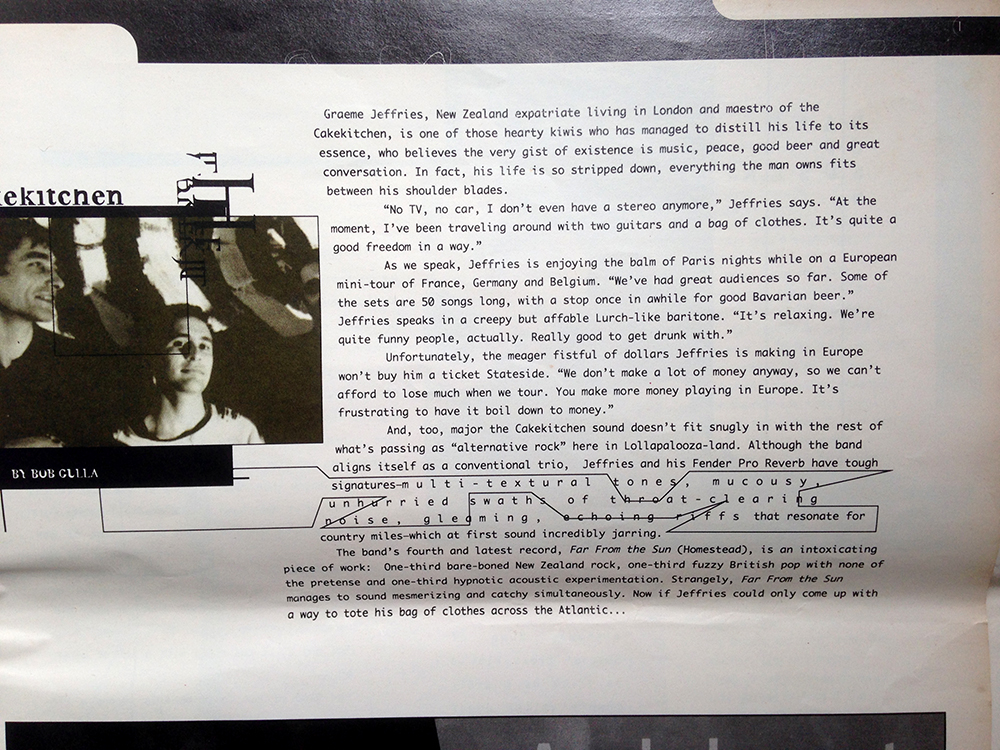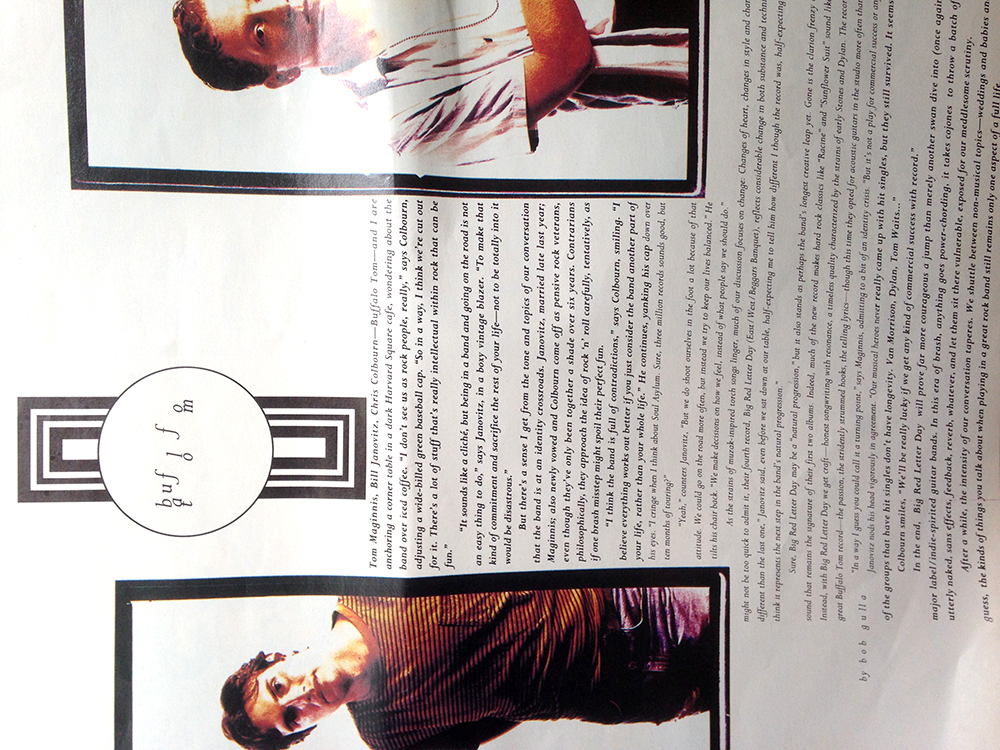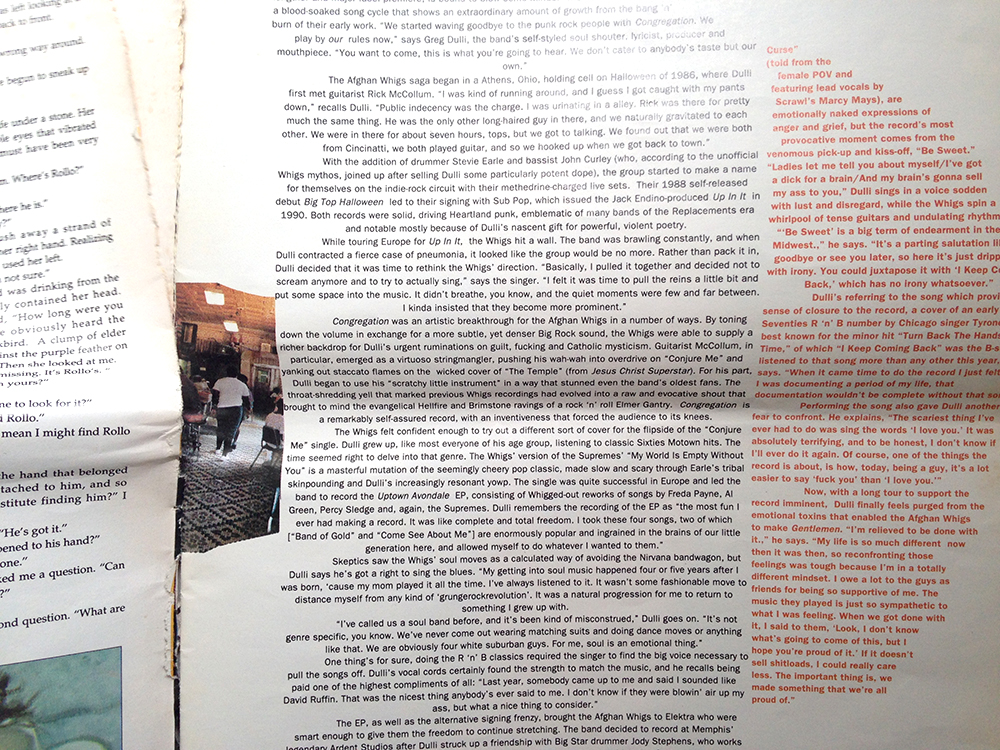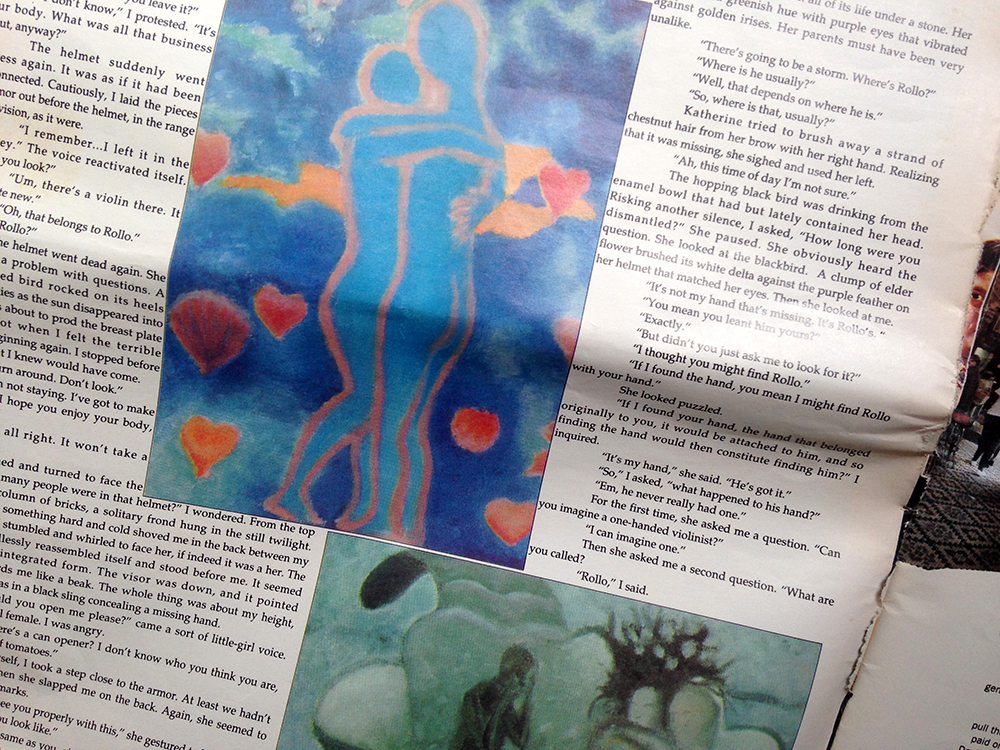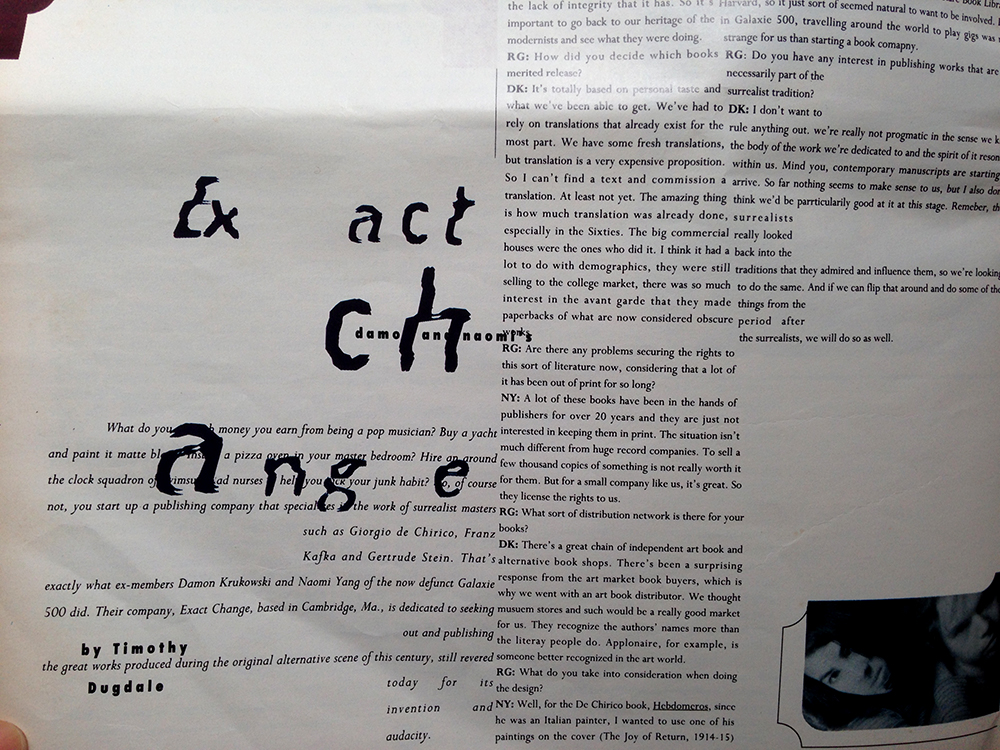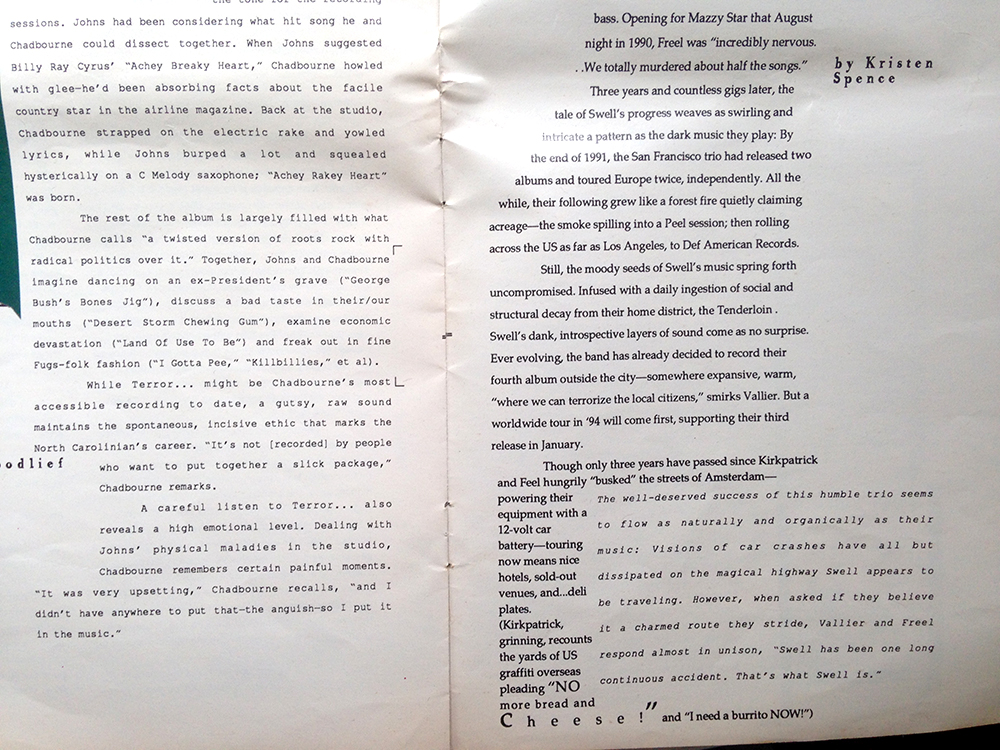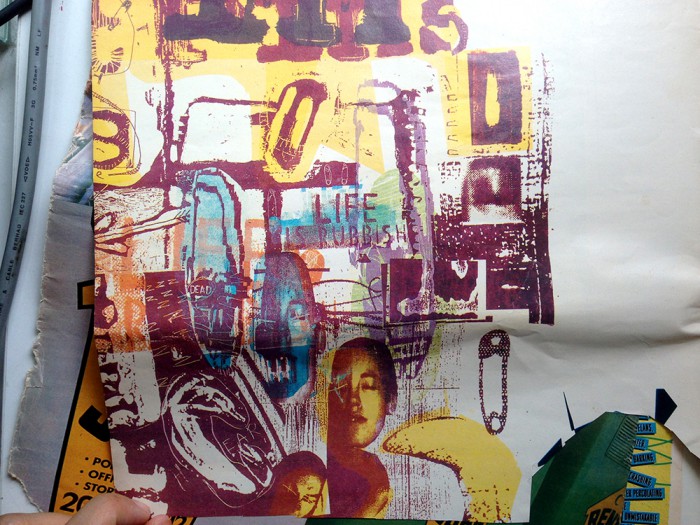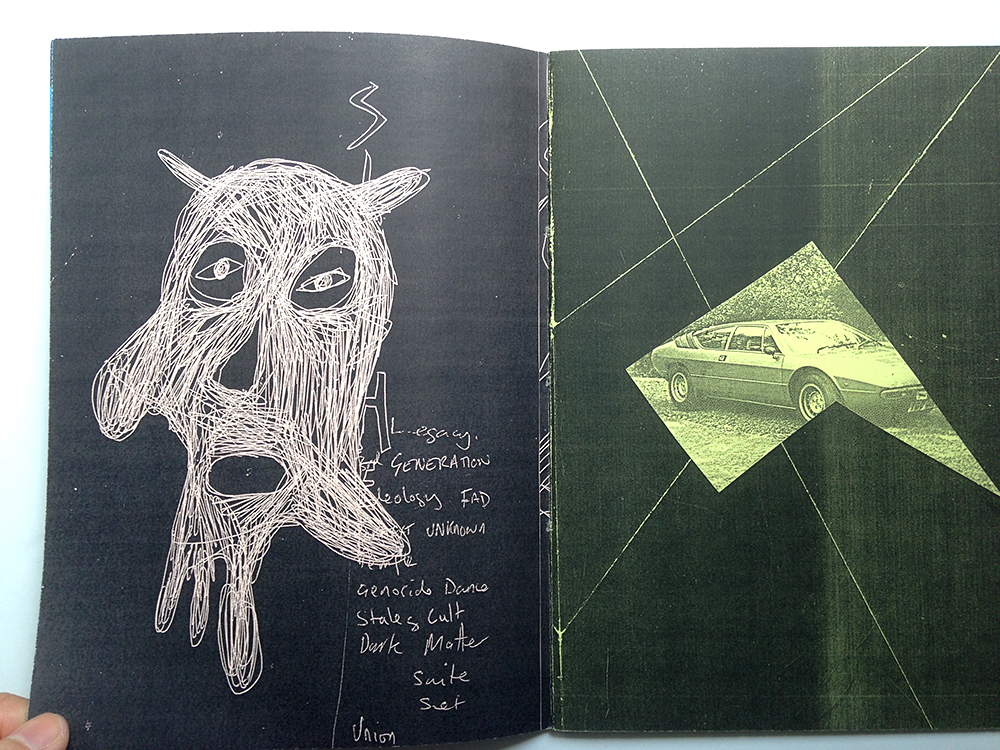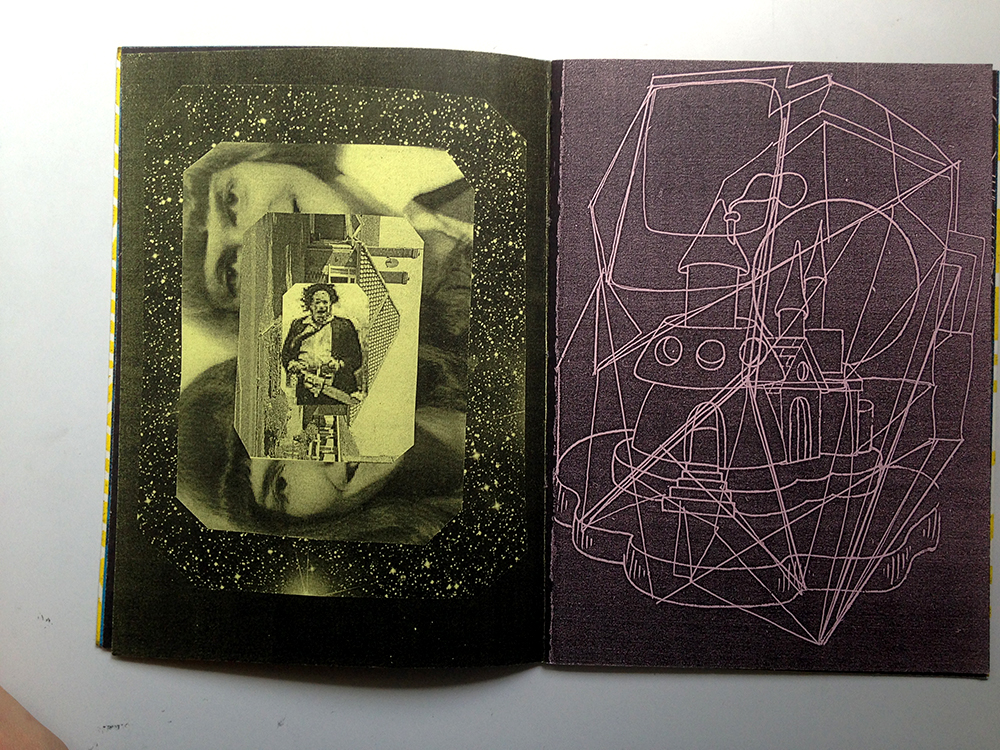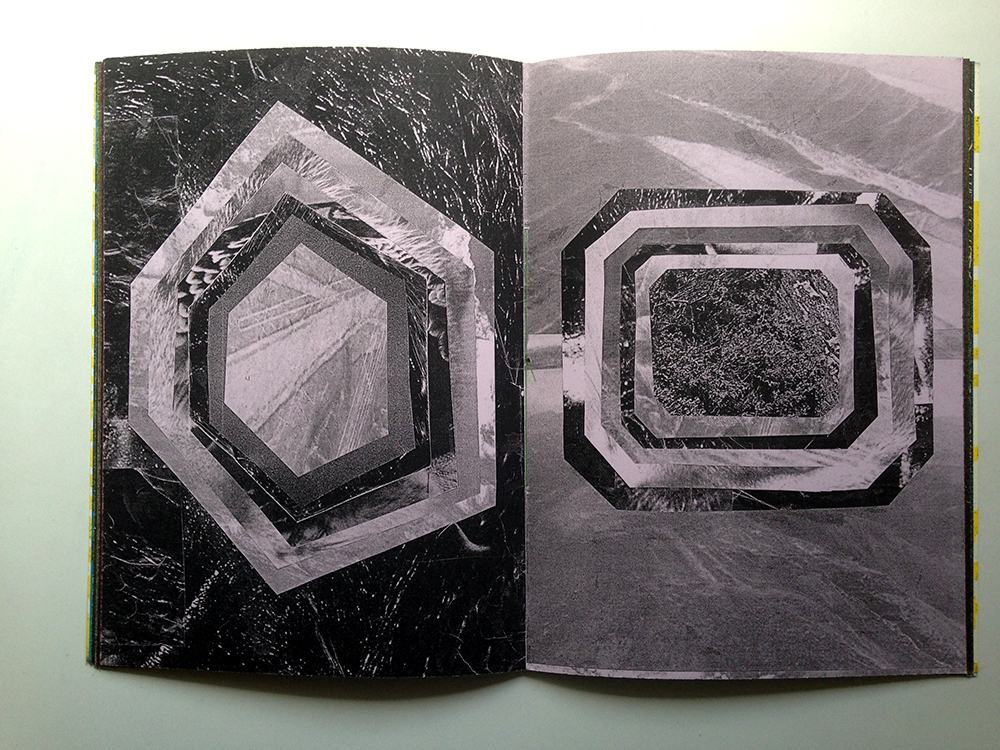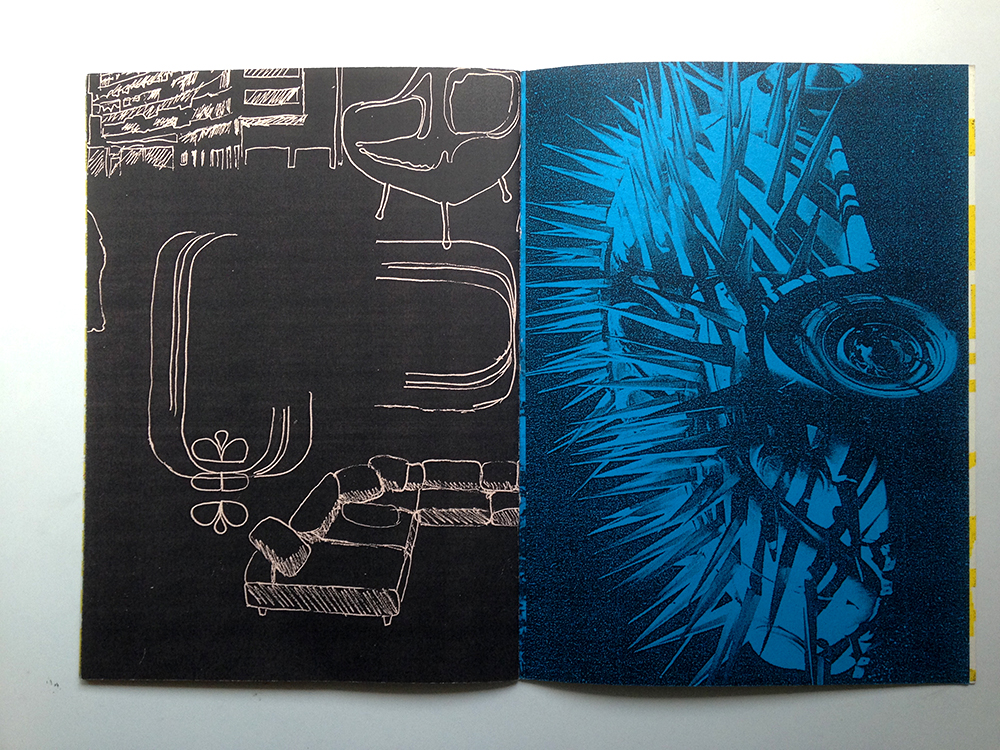Today I am sharing two publications: a zine with no name that I bought from Ti Pi Tin, and an alternative music magazine called Ray Gun.
Both are inspirational to me in terms of their experimental methods.
It is very simply made, staple bound, printed with a photocopier on generic coloured paper. I like it a lot because I thought it looks quite polished and cool for a zine that is made with a photocopier. It makes me think about how it is possible to use such low-cost methods to produce a print work that does not discount on quality. The images used in the zines have a good range of tonal values, and the black produced by the printer is rich and saturated.
I personally feel that in my experience of learning design and making publications, it is constantly implied that in order for work to achieve a polished look, it is necessary to invest (i.e spend a lot of money) in materials and printing. What does looking polished even means? I also hear a lot of my peers complaining about shops that don’t do good printing. I don’t completely disagree, but I find that as creatives we must be resourceful and work around what is perceived as weaknesses and turn them into something worthwhile. Given the right resources, most of us are able to make outstanding publications. But I also think it will be quite fun and challenging if we were to make publications using low-fi methods such as collaging, stamping, scanning, or experimenting with the photocopier. Does good design = expensive paper + printing + hours of working on InDesign + referencing Behance portfolios to death?
Anyway I don’t really believe in that and I would want to try something like this for my FYP.
The second publication I’m sharing is called Ray Gun, which is an alternative music magazine which had since ceased its run. The magazine’s editorial designer was David Carson. There is something very distinctively 90’s about the design work. I remember seeing these magazines in my cousins’ room when I was much younger. Both of them are trained in graphic design, and their own works have a bit of David Carson in them. I managed to salvage just one magazine many years ago from their home when they moved out and it has remained one of my go-to publications for design inspiration for a long time.
The type in this magazine is absolutely awesome. Text in a single article can have varying kerning and line height, which makes for an exciting visual experience.
Everytime I have to make some boring work that requires me to put some text and images side by side, I always ask myself, how do I make this thing look cool? I always reach out for this magazine and I feel inspired.